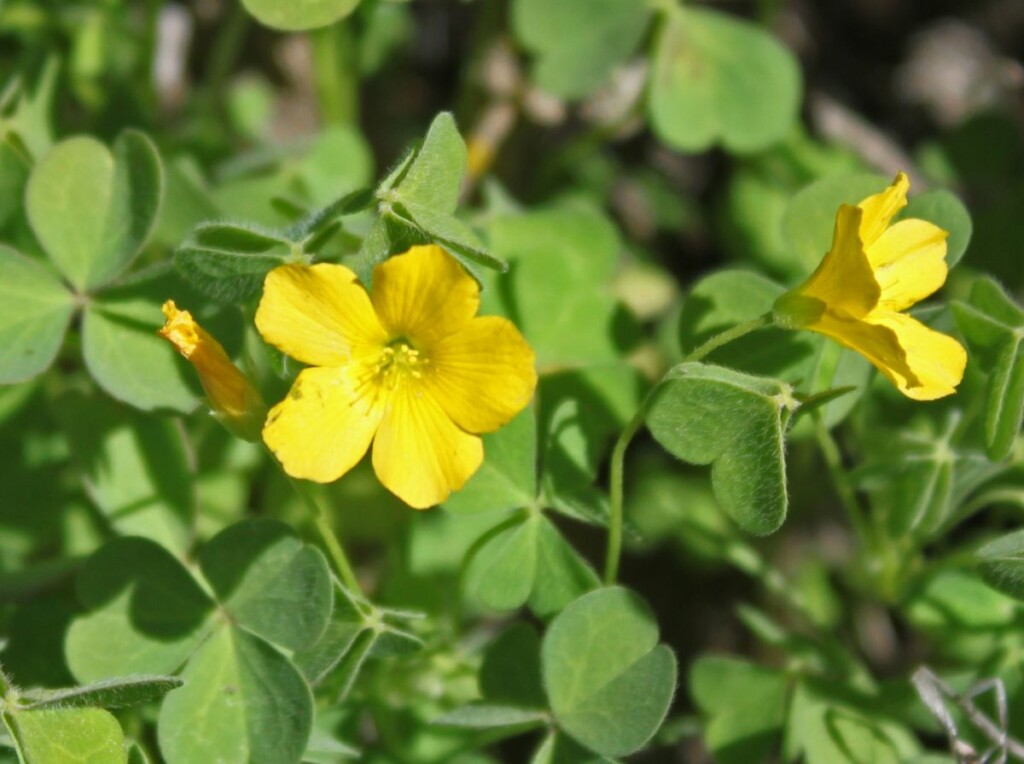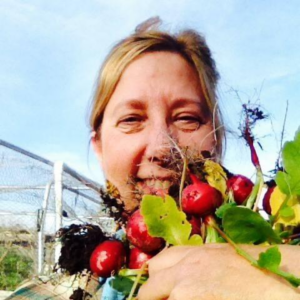Your Garden … with Sharon McCray: Oxalis Californica can be an amazing addition to your garden, or a nuisance
Oxalis is considered highly invasive in California
![]()

Those cute little yellow flowers and soft clover type leaves are oxalis californica and are native to the Golden State. They are not limited in color to yellow and in fact, with more than 550 species, can be an amazing addition to your garden . . . or one nasty nuisance.
By Sharon McCray

Sharon McCray
Finally, spring is here and that means time to get outside and start dealing with all those weeds, including tall grasses that seem to have invaded everywhere.
Whether dealing with annual, easy to pull weeds or those unwanted plants that come every year no matter what, now is the time to get busy.
Those cute little yellow flowers and soft clover type leaves are oxalis californica and are native to the Golden State. Oxalis flowers are not limited in color to yellow and in fact, with more than 550 species, can be an amazing addition to your garden . . . or one nasty nuisance.
Flower colors can range from purple, white and green with purple centers to bright yellow and every color in between.
The foliage varies as well and can be lime green and as dark as deep purple and are sold everywhere as a nod to Saint Patrick’s Day. Depending on your particular viewpoint and preference, these dependable plants can be both challenging and a blessing.
 Although oxalis prefers bright indirect sunlight, that does not seem to restrict their growth outdoors. Once established in your garden, it is best to accept that it will be there for a very long time. Oxalis is usually sold as an indoor plant but in our beautiful valley, it thrives outside all spring and summer.
Although oxalis prefers bright indirect sunlight, that does not seem to restrict their growth outdoors. Once established in your garden, it is best to accept that it will be there for a very long time. Oxalis is usually sold as an indoor plant but in our beautiful valley, it thrives outside all spring and summer.
Oxalis is considered highly invasive here because it thrives in our general garden conditions.
It almost takes an attitude that, because some gardeners work so hard to keep it alive, it can throw caution to the wind and creates headaches for the rest of us.
While researching information about oxalis, it is interesting to learn that most of the available information concerns how to take care and manage this prized specimen.
This is a classic example of the importance of knowing where your resources come from. People in other parts of the country are trying to keep this beautiful plant alive and some of us on the West Coast have different feelings.
Oxalis can be a wonderful source of nectar for bees and hummingbirds. It doesn’t set seeds so pollination provides no benefit to the plant and it provides food for seed eating birds including sparrows and doves while deer and rabbits seem to enjoy eating it.
Oxalis is rapidly spread by tubers and in a short few years will take over the most manicured of spaces.
Oxalis regnellii, aka wood sorrel can be toxic to dogs, cats and horses, so exercise caution when selecting varieties compatible with your intended use.
So, now that we have established that this is not one of my favorite plants, we should explore just how to get rid of it.
I have found no sure fire method yet. Spraying herbicides like glyphosate (Roundup) is suggested, but at what cost to you, your garden and our environment?
Hand pulling will frustrate the most dedicated gardener. By placing a layer of thick paper or, better yet, cardboard on top of the living plant and covering it with a thick layer of mulch, will certainly put a dent in future growth, I am not sure it can ever truly be eradicated.
Any part of the plant that remains in the soil will produce new plants, so make certain if hand pulling, that all of the root material is removed. A heavy dose of iron can also help manage oxalis in turf since grass won’t absorb the iron.
I hope this information is useful and has provided some insight into one of those unique plants that can be a bane to one and a blessing to others.
Happy spring!
Sharon McCray is a California native living in Santa Clara County since 1959. She became certified as a University of California cooperative extension master gardener in 1992 and a UCCE master naturalist in 2015. She hosts a radio show on KKUP public radio and is now retired.
- Guest column by Tim Davis: Two Gilroy nonprofits join forces to help those in need - April 17, 2024
- Your Retirement … with Marisa Otto: Do you know how your retirement income is getting taxed? - April 17, 2024
- Guest column by Jaci Muro: Gilroy Foundation supports young people with college scholarships - March 30, 2024
